Violence, neon, and retro-wave: What demon is inside of Nicholas Winding Refn pt. 2
Here is the 2nd part of us discovering the filmography of the Danish master.

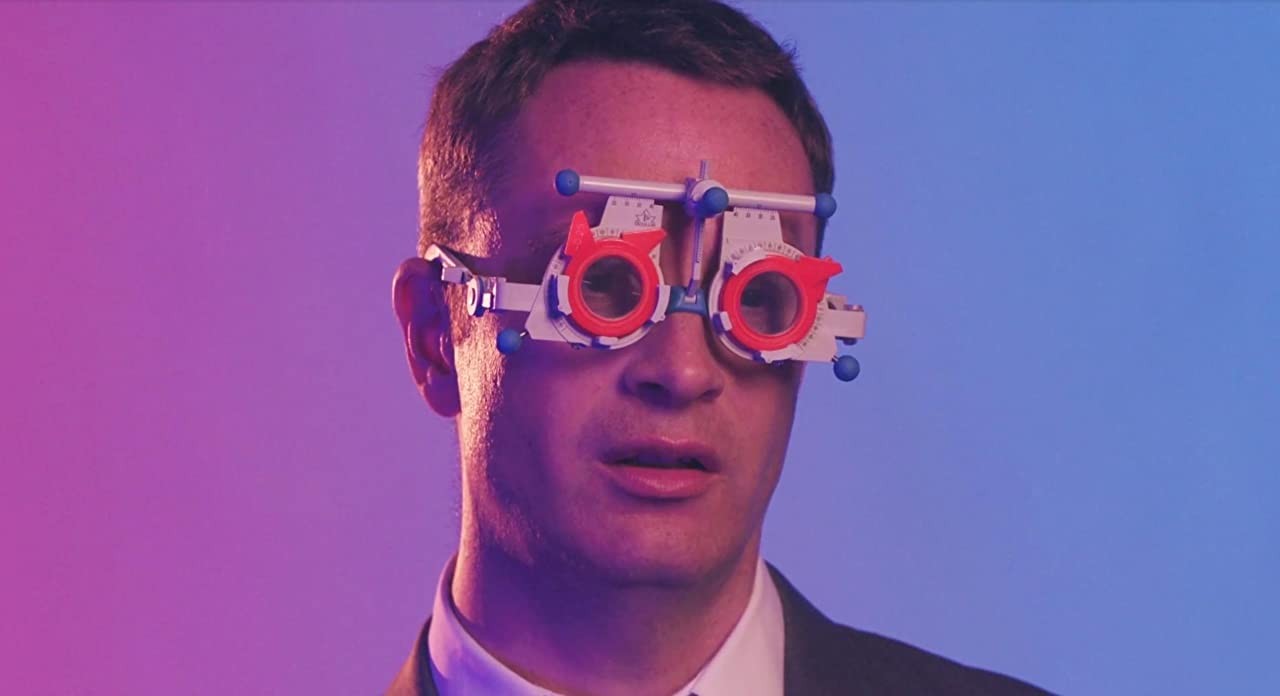
Speaking about Nicholas Winding Refn, it is hard to underestimate such motion-pictures as "Bronson", "Drive", "Neon Demon" etc. We all know and love them. That is because each movie has a unique image with the fleur of Refns style. So here is the 2nd part of us discovering the filmography of the Danish master. But before we move on, I highly recommend to read the 1st part if you are new to this material.
British accent: "Bronson"
Speaking about "Bronson" the statement of unsimilarity of Refns work become an absolute, cause after watching the "Pusher" trilogy, this film will blow you away with its montage and narrative structure. Moreover it is a British movie with vibes of classic British dark comedies. The overall impressions from "Bronson" are so contrasty that you would consider it was made by another director. Well, the storytelling is kind of sketchy and I was thinking I'm watching a clip in the form of a movie. Just because in contrary with his early work, here Refn uses electro-pop style music which is so contrasty with the timeline of the film but fits perfectly to the character. Everything in this movie could be called "striking", especially visuals.
In this "chapter" I would like to analyze Refn's approach to the work with color and semiotics of "Bronson". There is a chance that you'd recognize red and blue while watching the film and that is not only really catchy but also because it is so expressive.
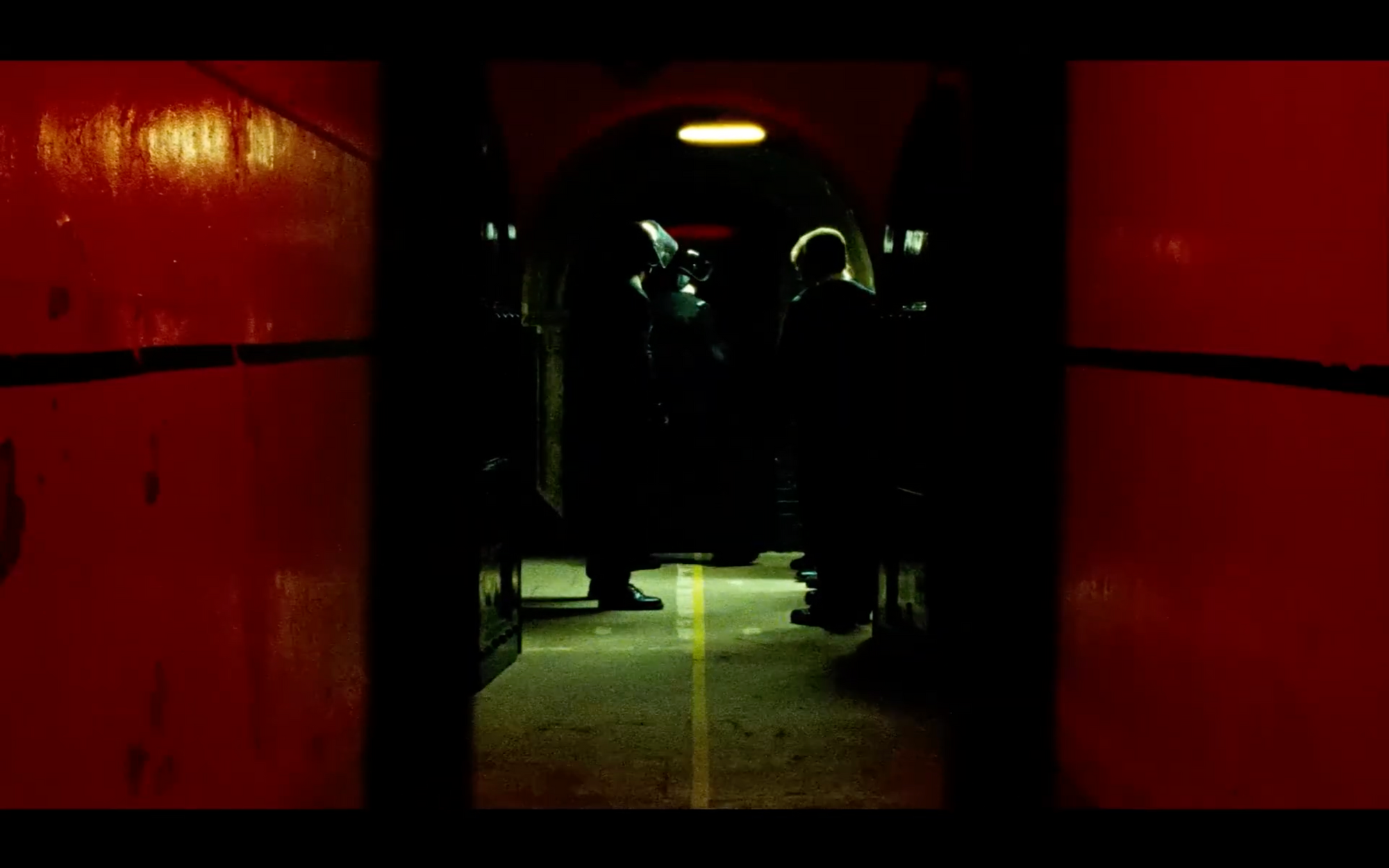
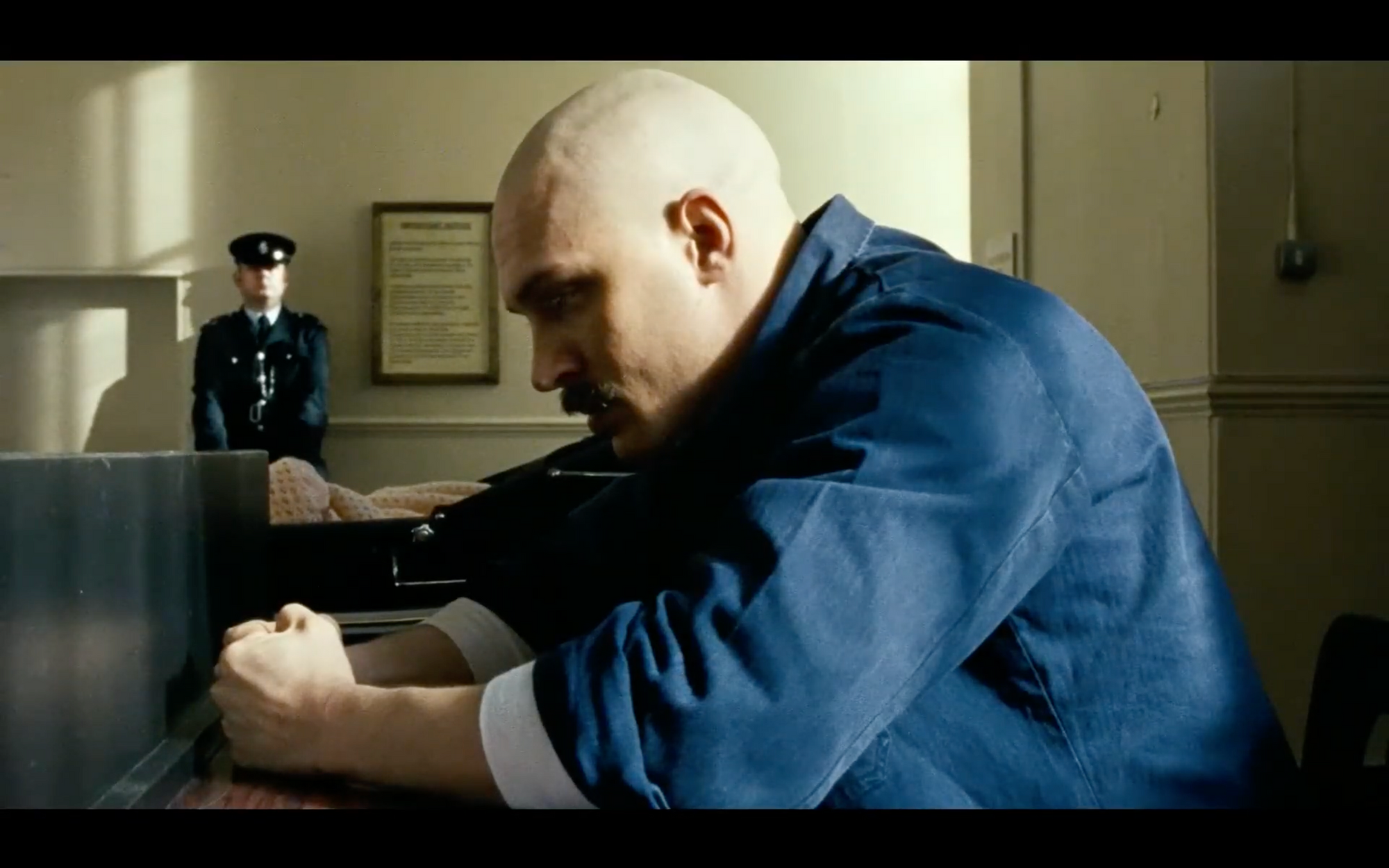
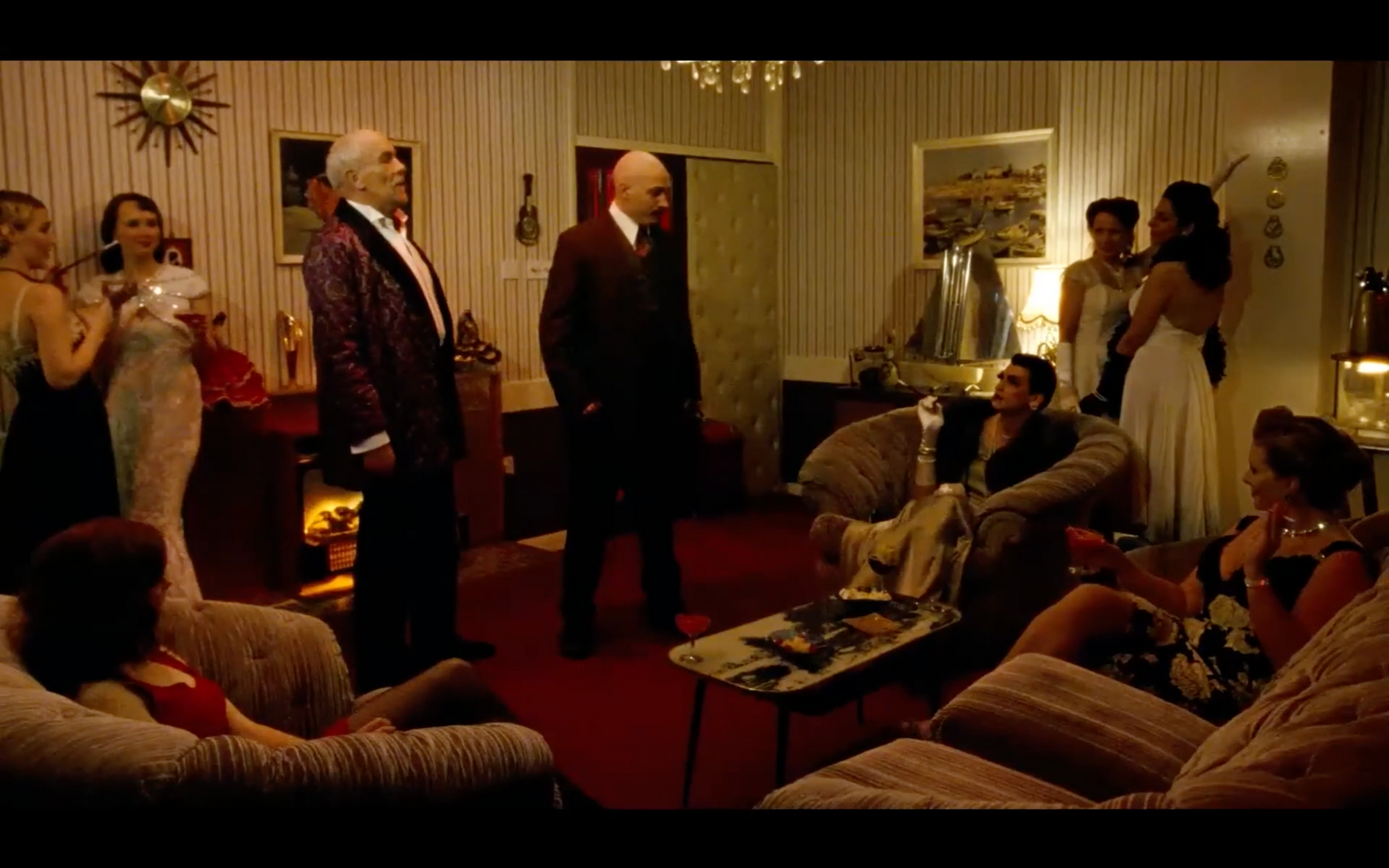
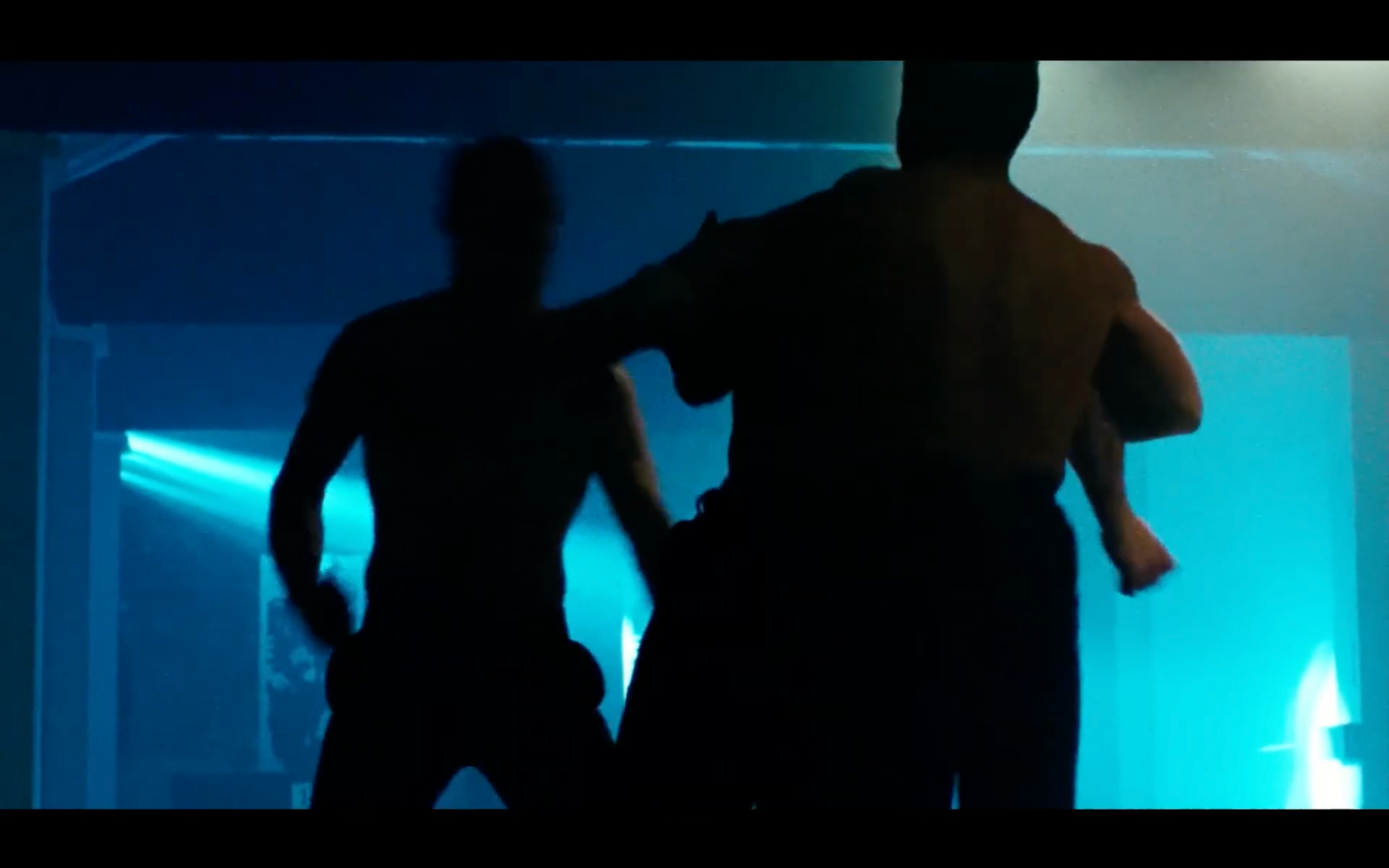
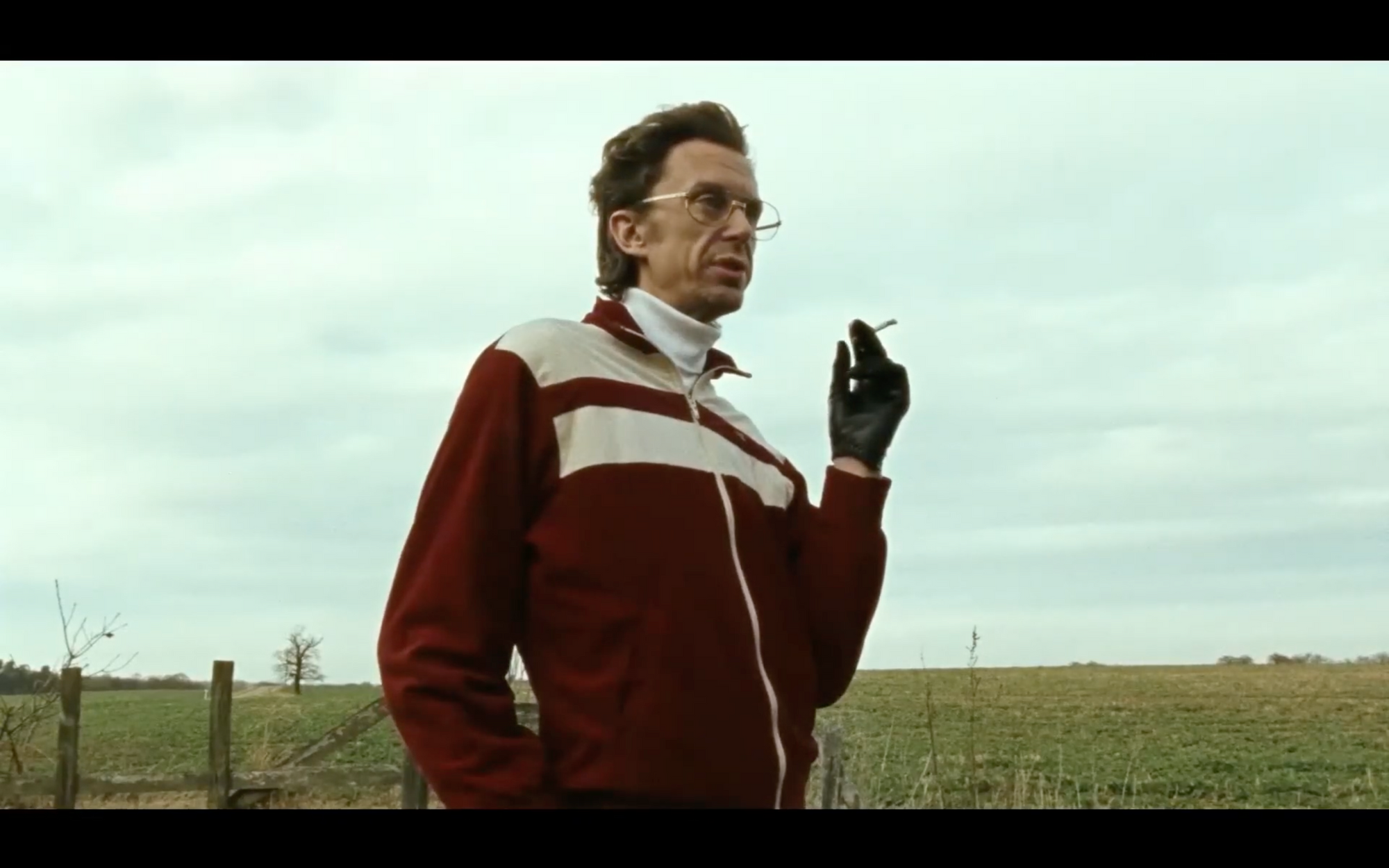
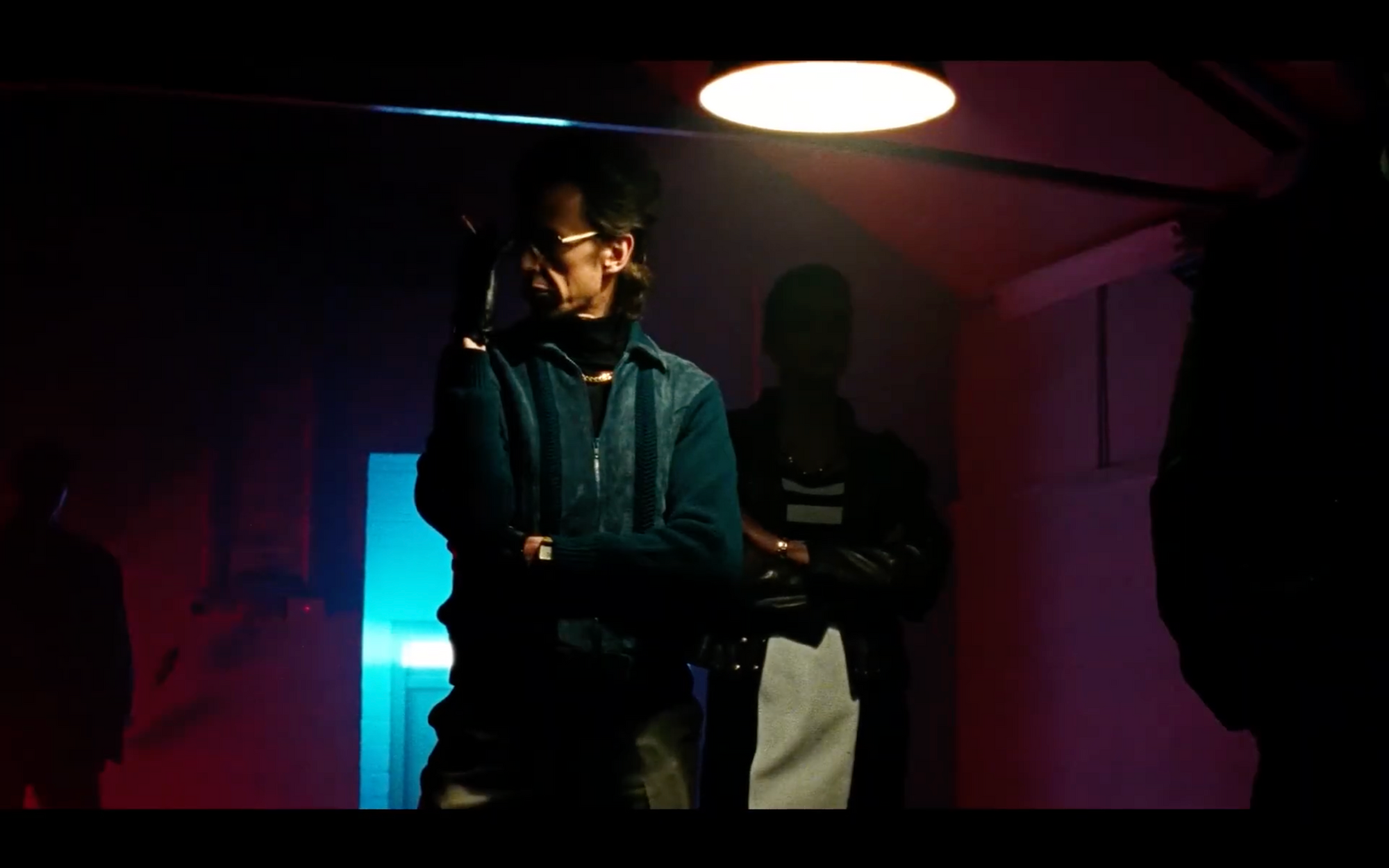
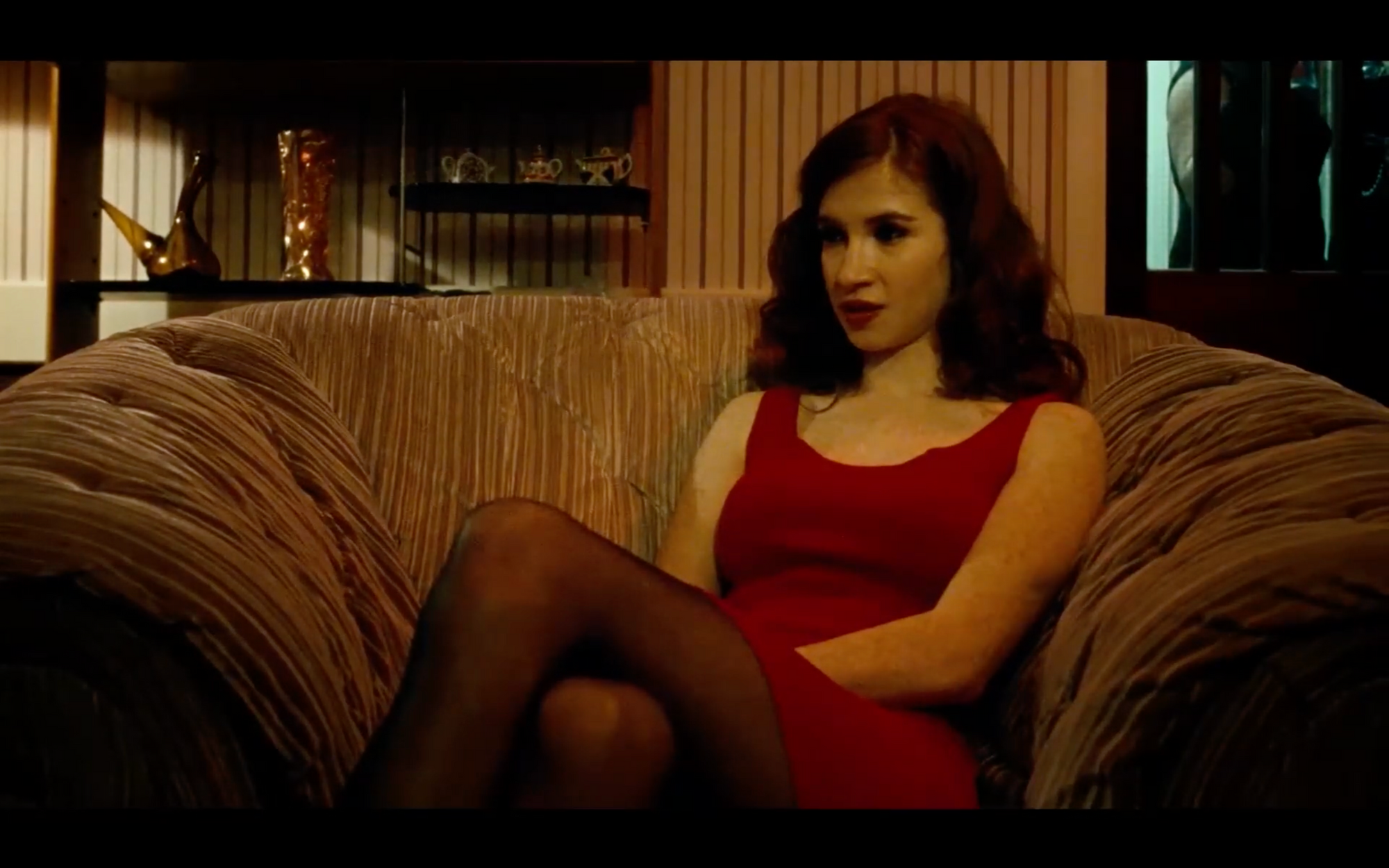
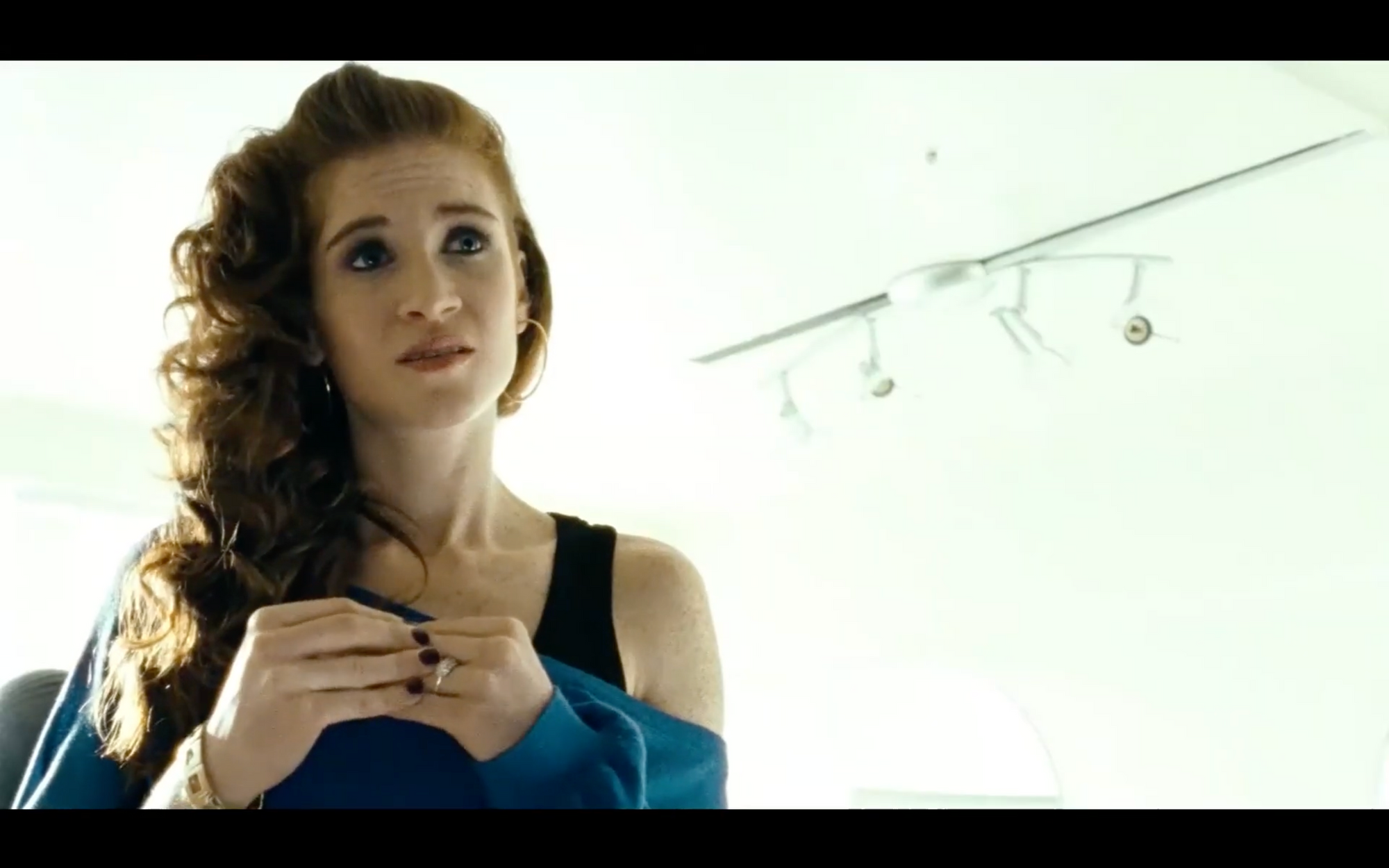
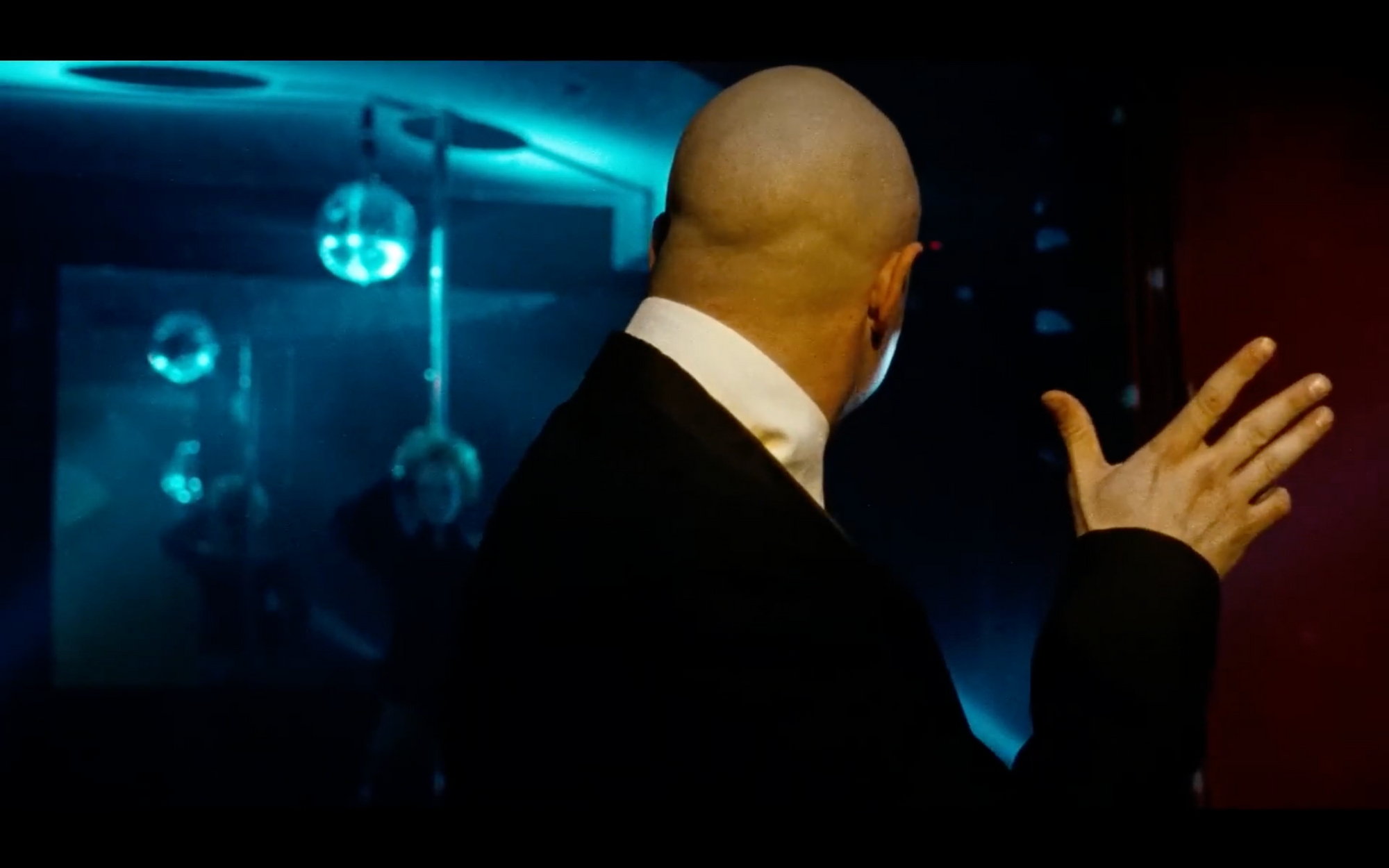
Simply saying red represents the protagonist's desire and ambitions. Everything he wants to achieve or become or get is on red. And it's not a secret that red is usually associated with passion and Nicholas Winding Refn uses this straight meaning to make us understand the nature of Bronson on the subconscious level. As an example, the main motivation of the character - to become famous. In the mind of Bronson being famous means to live a luxurious, aristocratic life that's why the red room represents his ambitions. One more example is the guy who helped the protagonist to become a fighter, which at first Bronson considered as a perspective to become someone special - so the guy wears red. But when Bronson fails to obtain his goal the guy becomes an enemy, the guy who represents failure and lost hopes, he wears blue and the fight itself is on blue background.
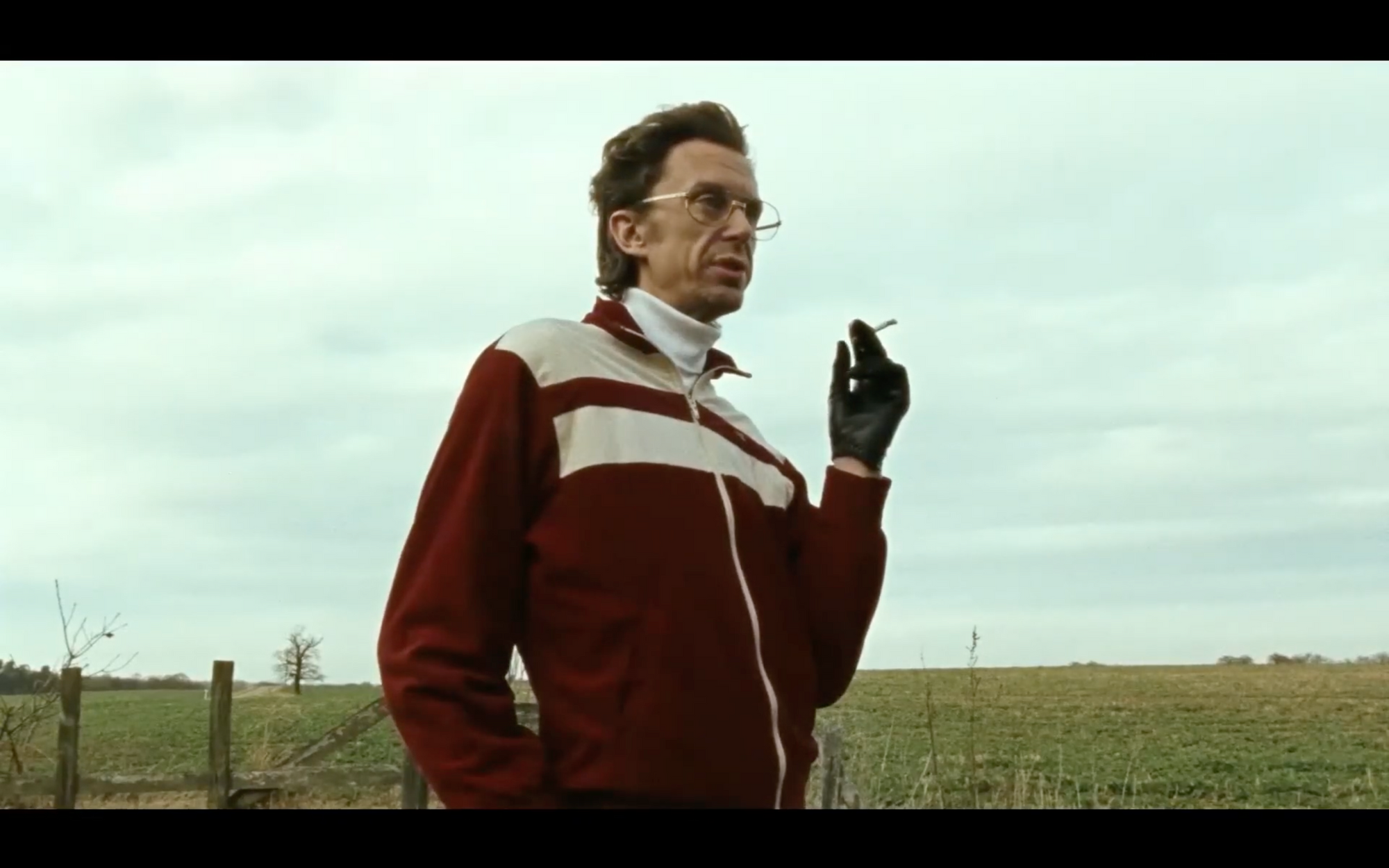
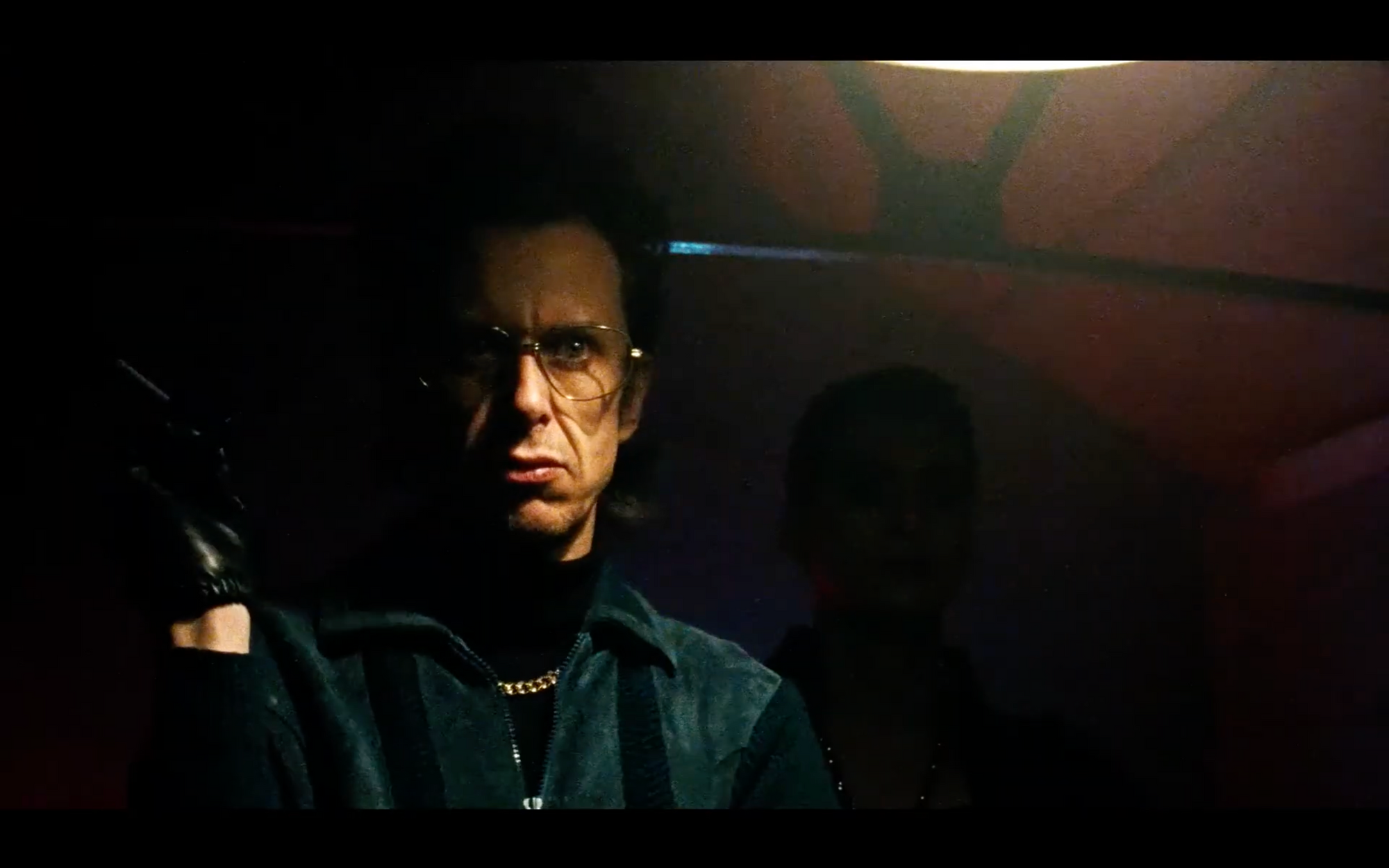
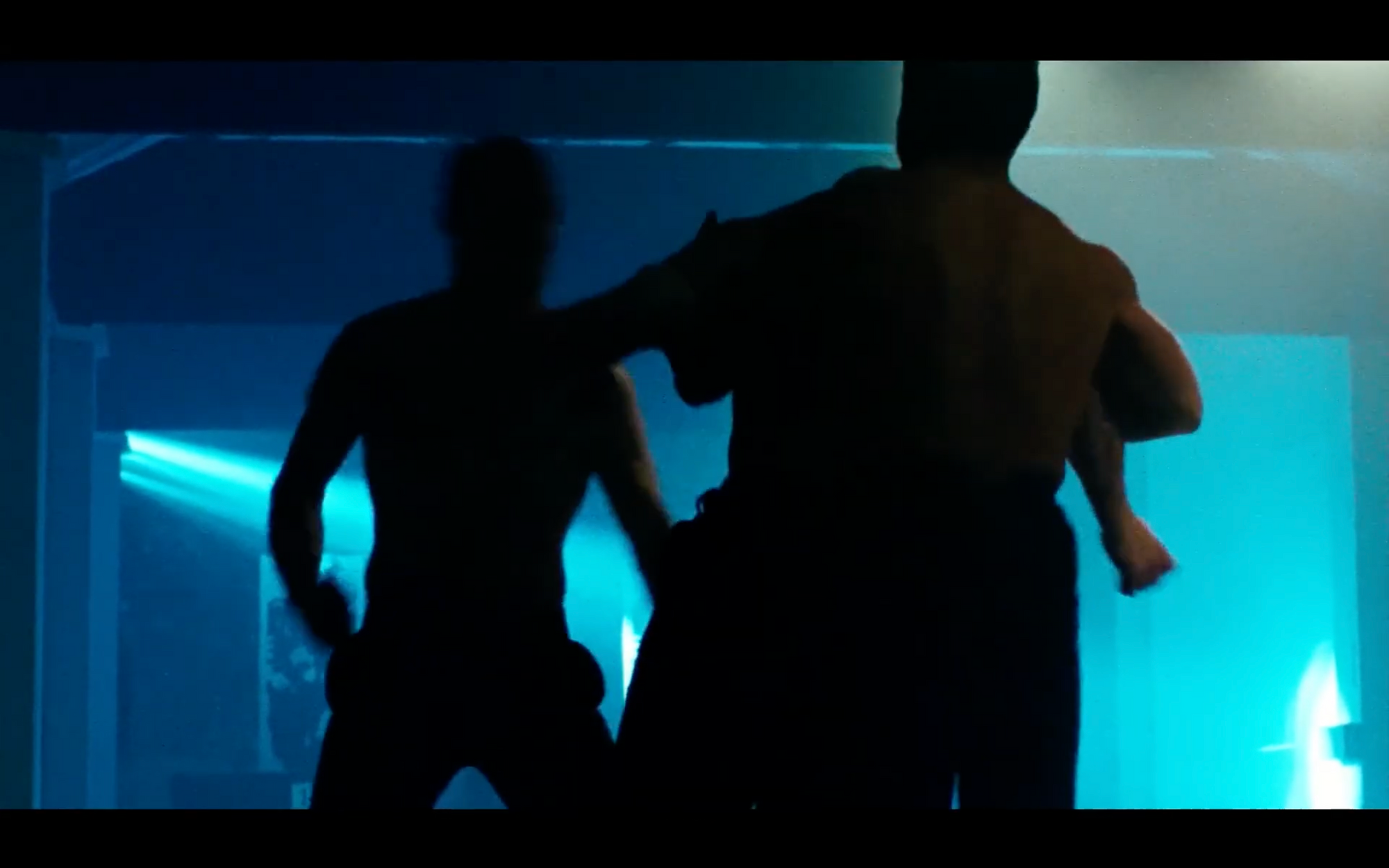
And prison as the main argument of character failure also proposes blue clothes.
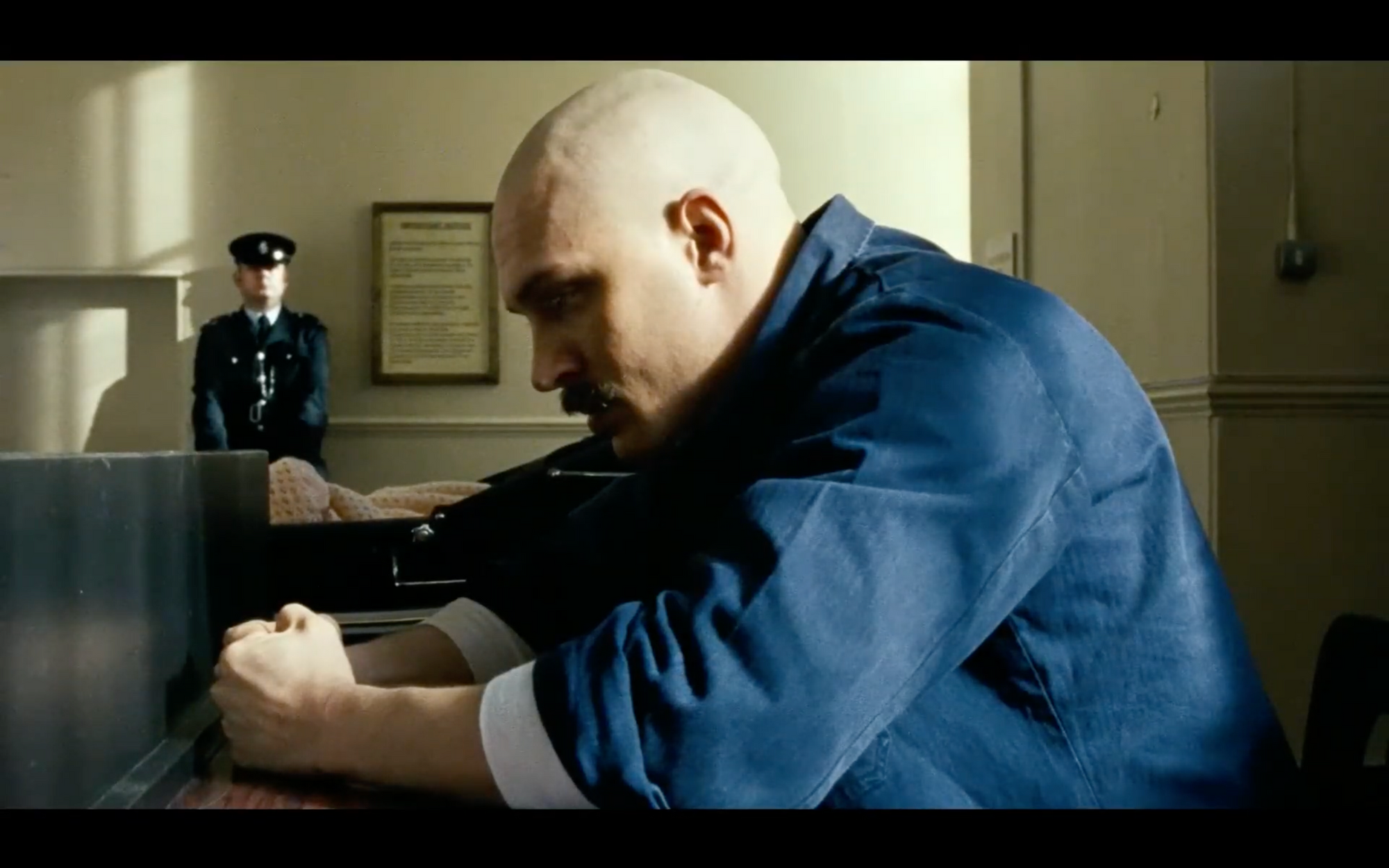
Not only the state usage of color is significant. It's really interesting how they are mixed together and sometimes we can see how red & blue combined within one frame.
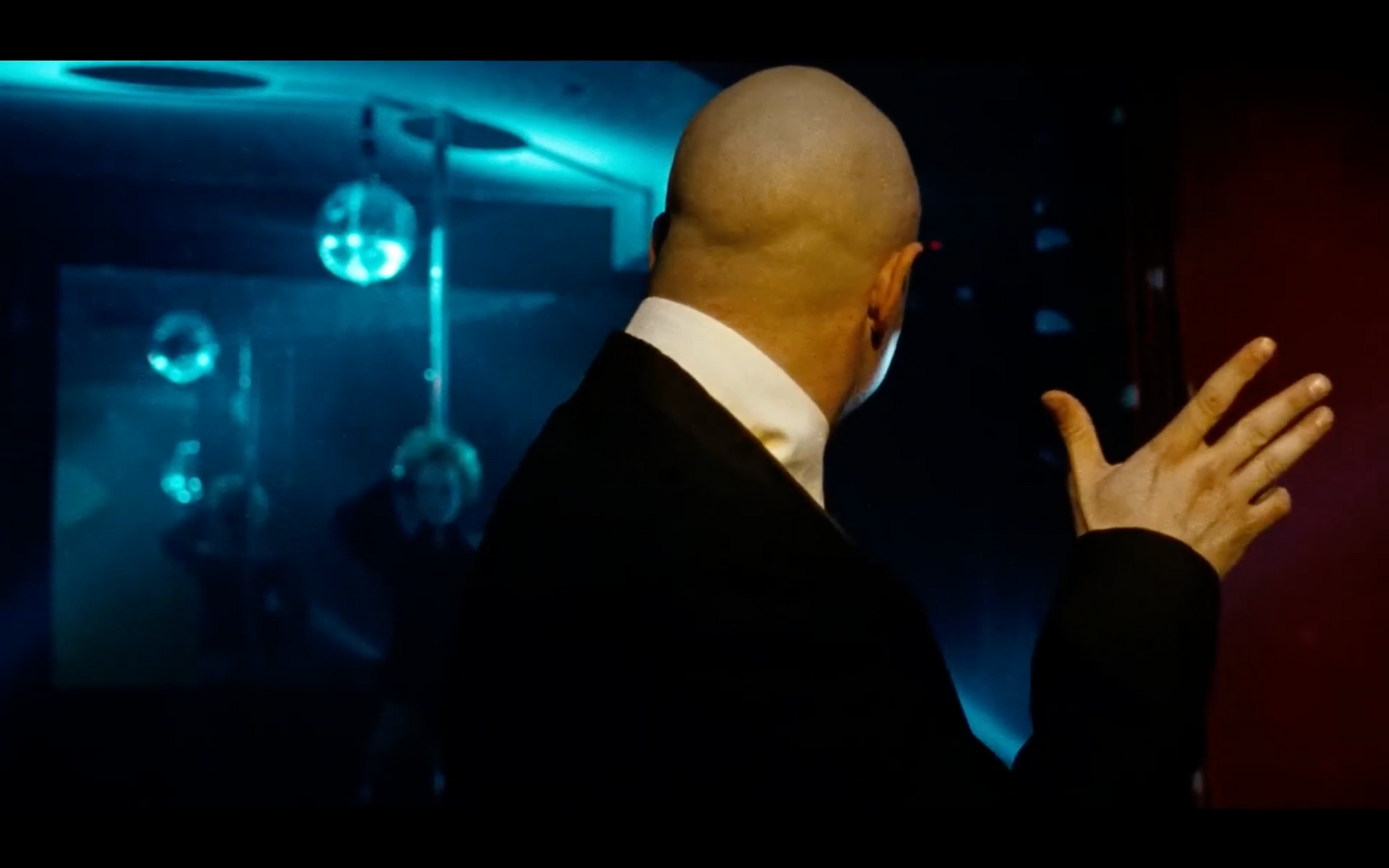
Besides the fact that it's just incredibly beautiful and cinematic, the amount of light in this shot makes it clear to which emotional state the protagonist is. And during the film red & blue color and lightning perform as hints that help us to interpret the image.
Refn claimed that he wasn't familiar with the person of real Bronson, but he found this story really personal. That's why the "Bronson" sends the message that true art gains through suffering, i.e failures. Nicholas Winding Refn has personally experienced bad times: his first Hollywood movie "Fear X" had failed at the box office and he's become a bankrupt. To pay bills he was forced to make a sequel of "Pusher" and as a result created an outstanding trilogy that rethinked the whole genre. True story.
Just like the protagonist of "Bronson" becoming famous through violence, Refn uses violence as an act of expression and representation of art. I don't wanna say anything else about the movie because it is just so captivating to watch "Bronson" that you definitely need to add this movie to you "watch-list".
Late period: Hollywood
The "Bronson" and "Valhalla Rising" helped Refn finally consolidate his name in the movie-making industry. Moreover, he has established himself as an independent author who will not serve soulless film corporations. Even in Hollywood, Refn did not lose his head and continued to experiment with genres.
Neo-noir: "Drive"
The first film in Hollywood and immediately starring Ryan Gosling. The most significant in this film is that Nicholas Winding Refn has changed his approach to create images in his films. In the "Drive" cinematography is so calm. I mean this is the action film where camera work is very smooth and well exposed. And the director again builds up the movie on the contrasts: action vs smooth cinematography, good vs evil, red vs blue.
In the "Drive" Refn narrates a love story in the fictional world of neo-noir what means night city, stylish titles, electro music (later on) and aesthetic violence. The protagonist doesn't have a name or any background - he's just a driver. But there is no mystery about Ryan Gosling's character because he reveals via action scenes. The Driver is a classic antihero with all the characteristic features such as personal rules, unknown background and mastery of killing people. Refn uses opposite colors of red and blue to depict different worlds of Driver and beloved girl. He is a criminal and represents the gold world without sympathy and bright moments that's why all the attributes of his world and clothes are in cold blue color.



She is the opposite: wearing bright red T-shirts and blouses which symbolize love and hope for the protagonist. Even the mise-en-scène of an ordinary dialogue is directed in a special way to show the contrast between two characters using for example red and blue wallpapers.




The drama of "Driver" is in the initial difference between this couple. There is no way they could be together because his way of life may endanger Irene and her son. And the drama arises with new power during the denouement when the protagonist commits double murder and realizes that he is a pure evil and should stay away from Irene.


Going into darkness as a symbol of accepting the demon inside. From this point Driver goes crazy and starts his revenge. Only after killing all bad guys, he can have a sigh of relief and change blue clothing.


Driver is the real hero. He is the only one who truly deserves to beautifully leave in the sunset. Nicholas Winding Refn leads the way of the character through the chain of violence and suffering, because only through some negative experience and emotions you can either reach an art (like in "Bronson") either become a hero.
Psychological thriller: "Neon Demon"
Now we need to talk about the neon. It's tightly connected to "The Neon Demon" and makes the visual narrative of it really, really significant. 100% it could be considered as an initial evolution of "Drive". Less words - more color storytelling, but this time it is expressed in the neon.
The fact is that in the 70s neon signs were used by bars, strip clubs and cinemas where 18+ films were shown. So in the minds neon has become a sign of something niche, and over time it has become a symbol of prostitution. In many ways this meaning was confirmed by the classic films of that time: "Taxi Driver" by Martin Scorsese, "The Killing of a Chinese Bookie" by John Cassavetes and the "Scarface" by Brian De Palma.
And because neon symbolizes something we can't experience we are so fascinated by the forbiddenness of what is behind the neon. It pushes away and attracts at the same time.

Those neon movies by Refn are definitely inspired by Wong Kar-Wai and by new wave in the American independent cinematography of the 70s. At the same time he changes the rules and uses neon not to show outsiders or lower society, but to paint sterile life forms in the color of cruelty. In "The Neon Demon" this technique is used to gain a psychological pressure on the viewer. In the fictional world of the movie being in neon meant to succeed, but for viewers it was death, firstly, of identity, secondly, physically. Neon - it is a blood but represented in many colors.
Retrowave and influence
As you could see the filmography of the Danish director is full of significant movies and there are a lot to say about them. In fact I haven't said any word about "Only God Forgives" and "Too Old To Die Young" just because I haven't watched them yet. But still it is hard to underestimate the influence that Refn brought.
As a huge movie and music lover (yeah, just like a Tarantino) Refn always tried to combine two favorite arts because he himself admitted that for him cinema is music. He creates scripts according to the music he would like to use. That's why he would name his film with the particular genre, period or celebrity. For example: the "Pusher" is post-punk:
The "Bleeder" is a glam-rock:
The "Fear X" - Brian Eno, "Pusher 2" - Iron Maiden, "Pusher 3" - Niel Diamond, "Bronson" - Pet Shop Boys etc. Nicholas Winding Refn could name different bands to the eternity...
But the most interesting influence is that Refn was one of the guys who made us nostalgic about the 80s. It all has started with the "Drive" where pink titles and electro music has made its way to the mainstream. Well, I'm not surprised that retrowave has started exactly from the Hollywood debut, which revealed Refn's name to many movie-lovers. But in his early movie "Valhalla Rising" the director has used some electro vibes and it sounds even more revolutionary than in the "Driver".

Nevertheless, retrowave has started and become a part of pop-culture. It has resulted in the style we wear and the aesthetics we prefer. Perhaps it was the demand for the 80s that made Refn to direct "The Neon Demon" as it is. Moreover, not only music affected the retrowave. The violence and its aesthetics gave a lot of space to create some crazy initiatives such as the film "Kung Fury" which was made by fans and which is a real cool parody of action movies of the 80s. Or, I bet it is Refns influence, Benny and Josh Safdie - the hope of young American independent cinematography who have already made stunning "Good Time" & "Uncut Gems"
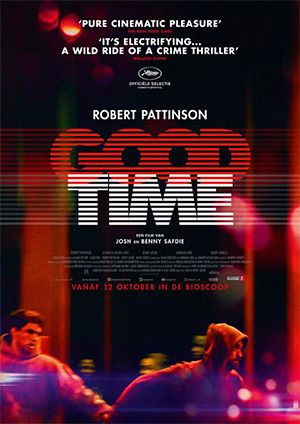
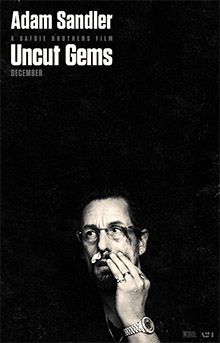
Or "Hotline Miami" - one of the phenomena in the indie game industry. It is like a sequel of the "Drive" but much more mad and cruel. Playing this game allows you to use literally every object to make bad things (p.s killing people), all that mixed with catchy graphics and immersive music by Pertubator and Carpenter Brut.
All this synth music brings us back to childhood when we watched "Mad Max" or "Blade Runner". Nostalgia made us desire to pay respect to the epoch we love that's why retrowave became so popular. And who knows, maybe retrowave resulted in filming "Blade Runner 2049".
"This is the end..."
Nicolas Winding Refn is an astonishing director. Each movie gave me a unique experience and impressions about the inner world of their creator. I feel like this guy has given so much to his work that he definitely wouldn't be forgotten. His style cannot be described within the categories because Refn doesn't try to be the best - he just produces whatever his mind wants and I'm happy he is able to do so. After all, he's a rockstar who stays behind the curtain.
We love movies here. We're talking about cinema here. Here we promote the love of art and try to inspire you to take your camera and make a short film. Leave the boring pre-production routine to the Filmustage - automatic script breakdown - and focus on your creativity!
After a long time of hard work we are happy to announce the beta-testing of the new scheduling feature in the Filmustage software. Be one of the first to test the new functionality - click here for more detailed information.
That's all for this week. Take care of yourself by watching more movies. Subscribe and see ya!
From Breakdown to Budget in Clicks
Save time, cut costs, and let Filmustage’s AI handle the heavy lifting — all in a single day.